![]() Read the peer reviews on this article
Read the peer reviews on this article
Rail freight faces a major structural challenge, as coal traffic declines steeply in the face of Britain’s move to cleaner sources of power generation.
The impact has been keenly felt by the biggest of Britain’s freight operating companies, DB Cargo, which had the largest coal-carrying contracts - in October 2016, it announced 893 job losses out of a British workforce of 2,974.
This follows almost two decades of steady growth in rail freight since the mid-1990s, and compounds the uncertainties that Brexit has created. No one knows what the technical, regulatory or commercial impacts of Brexit are likely to be.
Chris MacRae, Head of Rail Freight Policy at the Freight Transport Association, says: “There will be no immediate impact from a technical or regulatory point of view until Britain leaves the EU. All rules and regulations continue to apply. In fact, more will apply as some are already in the pipeline.”
But what will it mean for customs clearance? How will tariffs affect volumes? Will the opportunity be taken to introduce a long-talked-about levy on foreign road hauliers? Would a relaxation of competition law allow some sensible sharing of resources between companies and between freight operators?
These questions come at a time of severe challenges for rail freight. The collapse of coal traffic has focused attention on the need to address the constraints on expanding the modal share of rail freight, and made it imperative to develop other core markets to replace the commodity that has been a source of bedrock profits for almost two centuries.
Rail freight growth is UK government and EU policy, because rail effects substantial reductions in congestion, carbon and other pollutants. The UK Government has not set modal shift targets, although it has set overall carbon emissions reductions of 57% by 2032 and 80% by 2050, based on 1990 levels. In contrast, the EU has set targets for freight transfer: using 2005 as the baseline, the 2011 EU Transport White Paper set a target of achieving a shift of 30% of road freight over 300km to rail or waterborne transport by 2030, and of more than 50% by 2050.
Since these ambitious targets were set few continental countries have managed any increase at all in rail freight, and the DfT’s Rail Freight Strategy: Moving Britain Ahead (published in September 2016) joins a series of consultant and EU reports in trying to identify the reasons and suggest practical responses.
The DfT’s analysis
Groundwork for the DfT’s report was carried out by AECOM. In assessing the potential for growth by commodity, it found the most promising to be deep-sea container movements and construction, with scope for growth in others such as domestic intermodal, biomass and automotive. The AECOM study (Future Potential for Modal Shift in the UK Rail Freight Market - AECOM, Arup, SNC-Lavalin, September 2016) and industry consultations informed the DfT Strategy with four priority areas:
- Innovations and skills: Rail freight can never hope to match the flexibility of road haulage, so the nature of its longer-term commitments and contracts means that it has to offer a dependable and timely service. Equally it has to match the information systems offered by road hauliers, and use IT systems to refine train operations and efficiencies. The Rail Delivery Group (RDG) is working with the National Skills Academy for Rail to raise skill levels.
- Network capacity: Advice from NR’s Freight Network Study towards the end of 2016 will inform the DfT’s planning for Control Period 6 (CP6, 2019-24). To meet a recommendation of the Shaw Report and provide better support for the national operations of FOCs, a new ‘virtual route’ team has taken over responsibility for CrossCountry (which operates across seven of the eight current routes) and freight. Paths and the mechanism for their allocation for both passenger and freight are being examined, together with the impact on freight of passenger franchise specifications. Protection for new paths created by freight-specific investment in capacity is being considered.
- Track access charging: The increase in track access charges over CP5 (2014-19) of £15 million per year is recognised as a constraint on growth by raising costs. The strategy accepts that the environmental, air quality and reduced congestion benefits of rail freight are “not currently recognised in the track access charging regime”. Consideration is being given to changes that would rectify that, any support being “subject to the identification of future funding”.
- Telling the story of rail freight: The rail freight industry has not been good at selling its collective benefits, either to the public or even others within the rail industry or DfT. The RDG has co-ordinated recent efforts to showcase these benefits, but more needs to be done - in particular, creating a single “portal” for information about rail freight.
The DfT’s strategy follows Transport Scotland’s Delivering the Goods, published in March 2016, which identified four priorities: innovation; facilitation and partnerships; promotion of the benefits of rail freight; and investment. Devolved administrations such as Transport for the North and Midlands Connect are also devising rail freight strategies.
Rail Freight Group Executive Director Maggie Simpson broadly welcomes the strategy: “If it is what central government could and should do as part of its bargain, and if you accept constraints around enhancement planning, I think it does a reasonably good job looking at the areas where government effects can give the best value. To get growth, everyone has to take action.”
Philippa Edmunds, Freight on Rail Manager at the Campaign for Better Transport, agrees that: “It gives clear vision and shows government support for rail freight, giving certainty to customers.”
What’s missing?
Firstly, assurance that whatever bespoke investment is made in rail freight schemes is delivered in a timely and efficient manner. NR’s consultation on the detailed Freight Network Study, looking at requirements over the next 30 years, is intended to specify the infrastructure work required to address capacity issues. But the recent record on implementation has not been good, with the package of projects under way to enhance the gauge clearance and paths for Felixstowe traffic a case in point.
Says Simpson: “There has been a failure of portfolio management somewhere between NR and the DfT. There has been no grip of the Felixstowe-Nuneaton upgrade. At the start of the last Control Period, they split the work so that each package was being done by a different area, and the original plan to bring all projects to fruition at the same time was scuppered by NR cost escalation. Someone needs to take end-to-end charge of such projects.”
As a consequence, the benefit of each project has been limited, and work has yet to start on the most important single package of work - the doubling of the Felixstowe branch.
The fact that rail freight traffic through the Channel Tunnel barely reaches the tonnages achieved by the previous train ferry is one of the most disappointing failures of recent decades in the railway industry. Only eight of the 35 paths for freight trains are currently used. To create a facility costing £4.65 billion (equivalent to £12bn today) and be using only 54% of its capacity after 23 years - for all three types of traffic through it - suggests the need for a new strategy.
Simpson sees the issues surrounding the Channel Tunnel as more about perception than reality, although rebuilding confidence will take time. It may be only a matter of time before Britain becomes one of the increasing number of countries in Europe served by trains taking three weeks to create a supply chain with China, rather than six weeks by ship.
Whatever the outcome of Brexit, better trade connections will always be important, and Britain’s security-secured rail terminals may prove a strong suit. But wagon size is another constraint, and it will be two decades before continental-gauge wagons can reach northern England and Scotland via HS2.
The reasons for Channel Tunnel rail freight not reaching tens of millions of tonnes a year, as had been confidently predicted at pre-opening conferences, are well known: endemic strikes on SNCF destroying users’ confidence in service reliability; the migrant crisis; and (until recent reductions) user charges that made the tunnel uncompetitive.
Moving customs clearance away from the tunnel and making sure the speed of freight trains does not drop below 40mph through the Calais area would help. But it seems that the difficulty of resolving the Tunnel’s problems has led many to give up and focus on lower-hanging fruit.
Although the Strategy recognises the importance of terminals, there is no move towards reintroducing the Freight Facilities Grants, which between 1974 and their abolition in England and Wales in 2011 helped companies with the costs of creating rail connections and terminals. They are still available in Scotland, although there are moves to end them there, too.
This omission is all the more regrettable given the key role played by rail connections to terminals, factories and distribution centres in achieving the cost savings that make rail competitive. Some may regard a planning requirement for rail connection where practicable as too dirigiste, but for certain terminals - such as ports, car plants and even certain National Distribution Centres - consideration should be given to making it essential.
Recognition of the particular challenges of growing intermodal traffic, and especially domestic intermodal, is reflected in the Mode Shift Revenue Support (MSRS) scheme.
However, this is guaranteed only annually from a pot covering a five-year period, which makes long-term planning more difficult - it amounts to £18m a year spread across five FOCs. Introduced in 2015, it currently saves around 800,000 lorry journeys a year.
GB Railfreight Founder and Chief Executive John Smith points out that GBRf’s equipment is the most heavily used of almost any railway in Europe, creating efficiency and productivity levels with little scope to cut costs further.
It might have been helpful for the Strategy to recognise that quite modest reductions in traffic can have a disproportionately large impact on congestion - research suggests that a 2% decrease in traffic can reduce congestion by 10%.
MacRae feels that a similar publication to that produced by the Scotland Freight Joint Board - an easy to understand guide to the benefits of using rail freight services and how to access them - would be equally useful in England and Wales as part of telling the story.
“More work needs to be done to explain to potential customers how they should think about rail freight, and what questions they should be asking to see whether or not it is going to be of use for their traffic,” he says.
Planning issues
One thorny subject barely touched upon in the Strategy is planning, although a lack of strategic rail freight interchanges (SRFIs) is seen as a constraint to intermodal growth. An SRFI should be over 60 hectares, capable of handling more than four freight trains a day, have rail-accessible buildings, ideally receive trains of 775 metres in length, be designed to minimise the need for shunting, be close to trunk roads and rail line(s), and be gauge-cleared to at least W8.
Both Simpson and Julian Worth, Senior Consultant with the Rail Logistics Company, believe we have come a long way since the time when the Nissan and Toyota factories could be built without a requirement for a rail connection, and Simpson believes the planning framework in place is now better understood. Whether it will shorten lead times remains to be seen.
Hardly any new terminal has been built without a long planning battle, even when the wider benefits to the economy and environment are substantial and obvious. Some large SRFIs have been a decade in the planning before a sod was turned, and even small depots have taken years - such as the Highland Spring depot at Blackford, which finally received the go-ahead in March 2016. The delay was caused by local objections, despite the benefit of fewer lorries travelling through the village.
Fears that rail connections were being used as leverage to gain planning permission for developments biased towards road transport are discounted by Worth.
“Daventry shows they are not a Trojan horse to get planning permission - far more trains are going in and out of Daventry than originally forecast,” he says.
“Terminals within the Golden Triangle are being driven by the inbound supply chain, and the cost saving of a box delivered by rail from port is at least 30%, perhaps 40%.”
Potential for intermodal
The Strategy recognises that the commodity category capable of the fastest expansion is intermodal, both deep sea and domestic. The suppressed demand for want of adequate capacity has been recognised for many years, but progress in improving the main north-south route to Britain’s principal container port at Felixstowe has been frustratingly slow.
Currently 30% of Felixstowe and Southampton containers travel by train, keeping about 2,500 lorry movements a day from the Essex port off the A14. But the proportion of those goods being forwarded from the receiving National Distribution Centre to a Regional Distribution Centre is tiny. The AECOM report suggests that rail-connected NDCs have the ability to “make rail much more competitive in the next leg of the supply chain from NDC to RDCs or customer/store.”
The report adds: “The ability to put a container/swap body on rail for circa £20-£30 at such a rail-connected NDC, rather than circa £80-£150 if a road leg is involved to a nearby terminal, could lead to significant numbers of Midlands to Scotland/South East/South West trains which, so far, only a few companies have exploited. Tesco, for example, is one of a small number of companies which has adopted rail as part of their supply chain for certain flows. Under this scenario rail’s competitive distances in the domestic haulage market come down from 300+ miles to under 150 miles for inter-terminal movements.”
Worth echoes this analysis, and sees potential being developed by the number of new terminals within or close to the Golden Triangle. These new terminals widening the opportunities for intermodal services include: Maritime at Tamworth Railport; DIRFT3 (9-10 million sq ft of rail-connected warehousing); East Midlands Airport (6-7 million sq ft); Etwall, south of Derby (6-7 million sq ft); and Four Ashes near Wolverhampton (6-7 million sq ft). Further north, the link to Liverpool 2 in-river post-Panamax container terminal will open soon, and iport on the site of Rossington Colliery (near Doncaster) is already operational. To the south a new terminal at St Albans has been approved.
The AECOM report suggests that disused rail-connected power stations (such as Didcot, Rugeley and Ferrybridge) and MoD sites (such as Bicester) would be ideally suited to new SRFIs, and that this use should be given precedence over housing schemes.
Currently, some 60,000 containers of ‘ambient’ retail goods are moved annually by train into central Scotland from rail-connected NDCs in the West Midlands. And rail penetrates the country even further, with daily trains for Asda and Tesco to Aberdeen and Inverness.
Another omission from the Strategy is the need for ways to aggregate domestic intermodal. Tesco’s northbound supply chain from DIRFT is big enough to fill a train, but others may need partial trainloads combining to achieve a viable volume.
At the heart of new services is the conundrum of risk. As Simpson says: “Supermarkets don’t have to take a risk on road, so why should they on rail? New services that work well are those brokered by W. H. Malcolm or Russell Logistics - they have a good understanding of the various volumes and how they can be best served by rail.”
The same applies to deep sea. As Smith points out: “Intermodal doesn’t work unless we can fill a train to 75% capacity. Who takes the risk? If a shipper buys half the train, we can take a risk on the other half.
“Only 22% of boxes out of deep-sea ports go by rail. Double the Felixstowe branch and we could probably get another five to ten trains, taking up to 125,000 lorry journeys off the road a year. Triple E ships swamp the docks, and we can move containers off them quickly.”
Aggregates
Aggregates is another sector where new terminals are opening in response to demand - a 15% growth is predicted for 2017, and large numbers of new cement and aggregate wagons have been built.
Rail has already experienced a 100% increase in aggregates traffic between 2003 and 2015, from 15 million tonnes to almost 30 million. Says Worth: “25% of all aggregates in the South East are moved by rail. The concentration on fewer, larger quarries and cement works should benefit rail. The impetus is coming from the customer.”
The recent ten-year deal between DB Cargo and Day Group covers various new movements such as incinerator bottom ash from the energy-to-waste plant at Newhaven to Brentford, where the material is processed into aggregates for use in construction. The train delivering the ash is then reloaded with recycled aggregates for distribution from Newhaven, providing an unusual two-way rail movement of bulk products.
“The flexibility of DB Cargo to meet the changing requirements of the south-east construction market was key to the renewal of our contract,” says Day Group Operations Director Nick Sadler.
Modest-sized ‘pop-up’ depots can also be created in weeks rather than months - such as that established by DB Cargo and CEMEX at Warrington, which can handle up to 125,000 tonnes a year. Three despatch points (Dove Holes and Shap quarries, and Cardiff) feed 14 receiving depots. Given the predominantly urban nature of demand for aggregates, the benefit of rail in minimising lorry miles and air pollution in cities is particularly significant, especially since the November 2016 defeat of the Government in the High Court over its inadequate actions to reduce London’s pollution.
Overlooked in the Strategy is a trend to extract greater efficiencies at aggregate terminals by sharing facilities. Says Simpson: “At King’s Cross a single bottom-discharge facility has been built with three sets of hoppers for Tarmac, CEMEX and Hanson. One company’s crushed rock of the same grade is much like another, so rail freight operators may be able to help broker efficiencies that don’t run counter to competition concerns.”
Constraints on growth
The DfT Strategy summarised by commodity the constraints on growth. Several reflect the lead times for putting in place the terminal facility, handling equipment and appropriate wagons for new traffics. This is especially true for construction materials, which by definition have volatile volumes and destinations.
Of the various commodities covered by the Strategy, the surprise is the very low growth projected for automotive. The industry recognises the superiority of rail, not least for the significantly reduced incidence of damage to cars - hence the relatively short flow of finished cars for BMW from Oxford to Southampton. Moreover, the Etwall terminal near Derby could include a dedicated bridge into the Toyota factory. Again, aggregation of less-than-trainload flows may help, and Simpson is encouraging discussions through an automotive group.
Capacity issues have been exacerbated by the increase in passenger numbers and services. However, although welcome, this increase has reduced the windows for freight during peak times, and increased the need for dynamic freight loops to minimise the obvious penalty in driver utilisation and therefore cost when dwell times lengthen.
The most severe current constraints are the gauging and pathing restrictions impeding the expansion of deep-sea container traffic from ports, particularly Felixstowe. The gauge clearance of the line to the port of Southampton produced an increase in rail’s share of container movements from 29% to 36% in a year, but the port still needs the ability to be served by 775-metre trains.
It’s not just paths that constrain growth. In the Highlands, short passing loops and a paucity of double-track limit the flagship Tesco/Stobart daily intermodal train to just 20 containers. With more double-track and longer loops, the same locomotive could haul 28 containers - a 40% increase in rail productivity.
Alternative and diversionary routes for rail freight need to be planned for time-sensitive freight traffic. These are needed to cope not only with engineering works and unexpected disruption, but also with new pathing constraints introduced by passenger franchises with higher passenger frequencies.
The Strategy overlooks one impact of the low margins common to freight transport: the inability to fund market development. FOCs respond to tenders, but cannot employ logistics experts to discuss the requirements of each sector over the next decade and find ways to enlarge the role for rail. Says Smith: “You have to have core traffics to generate profits to speculate in developing new traffics.”
Contradictory policies
It is known that new roads generate additional traffic, so it cannot be logical for the Government to have a £15bn road construction programme (by 2020) while citing climate change mitigation and pollution reduction as priorities.
Looking purely at investment in measures that can bring about the desired modal change, while also lowering costs, the disparity between road and rail freight is stark. Over CP5, the sum available for the Strategic Freight Network Fund has fallen from £253m to £235.9m.
To put this in perspective, £3bn is being lavished on a single road - dualling the remaining two-way parts of the A9 in Scotland. This can do nothing but harm to rail’s competitiveness, and flies in the face of stated policy. The Hendy Review acknowledged the very high value for money that rail freight schemes deliver, giving an average benefit:cost ratio of between 4 and 5:1.
The 2015 EU study Freight on Road: Why EU shippers prefer truck to train concluded that the principal reason for the failure of EU measures to effect modal change was “the generally small scale of the investment in rail and intermodal transport relative to investment in roads, and to a lack of co-ordination of rail freight policy initiatives at the EU and national levels… co-ordination of rail and road policies is also needed as any measures affecting the competitive position of one mode have repercussions on the other.”
Leading climate economist Sir Nicholas Stern says the crucial issue is the nature of our investment in infrastructure: “If it is dirty and high carbon, it will lock us into that technology for a long time. We will be sentenced to live in cities where we cannot breathe or move or be productive… the next 20 years are going to be the most decisive two decades in human history.”
The policy mismatch is much the same when it comes to costs. The Office of Rail and Road is sending out signals that can only damage the prospects for an expansion of rail freight.
“The rail regulator’s interventions on track access charges have not helped and the last Periodic Review did tremendous damage, not just to existing flows,” says MacRae.
“It sent jitters round rail shippers or potential shippers thinking of using rail freight, who came away with the message ‘this is risky, let’s keep away from it’. The FTA has repeated to the DfT and Transport Scotland the negative impact of this.”
Rumours of further increases in the track access charges set by ORR exacerbate the position. But as Edmunds observes: “The guidance to ORR also notes that the Secretary of State wishes to be advised by ORR of, and to discuss with ORR, any changes to the charges which ORR proposes to pursue which would adversely affect the competitiveness of rail freight compared with other modes.”
This would matter less if road haulage met its full costs, but research by the Campaign for Better Transport (using DfT values) found that HGVs pay less than a third of their costs - such as road congestion, collisions, road damage and pollution - which equate to an annual subsidy of around £6.5bn.
These conclusions are in line with an MDS Transmodal study in 2007, which found a very similar amount of underpayment, of £6bn (Addendum to Metropolitan Transport Research Unit MTRU 2014 report February 2015. Heavy Goods Vehicles - do they pay for the damage they cause? 2014).
Given the ability of rail freight to reduce emissions on a significant scale (23 million lorry miles a year by rail movements to and from DIRFT alone), it is high time the investment ratio swung firmly in favour of more sustainable transport.
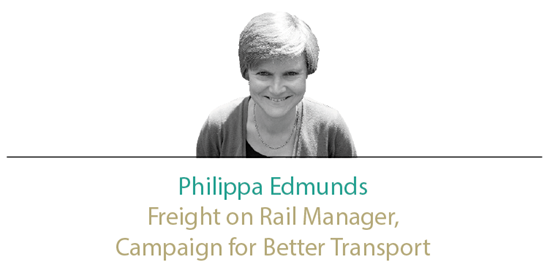
Anthony Lambert has written a cogent and comprehensive analysis of the Department for Transport’s Rail Freight Strategy and the outlook for the industry. I would like to emphasise the socio-economic benefits of rail freight to UK plc, and the resulting overwhelming case for affordable freight charges and network enhancements to satisfy suppressed demand.
Supporting rail freight is a great way for the Government to reduce road deaths, as HGVs are disproportionately involved in fatal road crashes because of their size and scale. The latest Government figures show that HGVs have been six times more likely than cars to be involved in fatal collisions on minor roads over the past three years. On motorways, in 2014 HGVs were involved in almost half (45%) of fatal collisions, although they accounted for only 11.6% of the miles driven on them.
Road congestion is damaging productivity, and cost industry £17 billion in 2015, according to the Freight Transport Association. The distance travelled by HGVs increased by 9% to 18.4 million vehicle kms last year. Nationally, half of the traffic from the largest HGVs (five-axle and above) is on trips of over 120 miles and a quarter of the largest over 180 miles, some of which could be captive to rail.
Figures for strategic corridors that have parallel rail lines emphasise this potential for modal shift. Daily flows of M6 corridor analysis show 9,500 of the largest HGVs on the route. On the A14 just outside Felixstowe, each day 4,863 out of a total of 5,632 HGVs (86%) are in the largest category. Removing even modest numbers of HGVs can reduce congestion significantly, because HGVs occupy considerably more road space than the average car, they need longer braking distances, and they are slower to manoeuvre and therefore cause more road congestion. DfT estimates the cost of congestion is 99 pence per lorry mile on the most congested motorways.
The Rail Freight Strategy recognises that increasing rail freight, which produces 76% less CO2 emissions than the equivalent HGV journey, will help the UK to meet its legally binding Climate Change targets. Surface transport emissions account for the vast majority (94%), and of that HGVs contribute 17% despite making up only 5% of road vehicles. Both passenger and freight rail together are less than 2%. Rail has the potential to save over 4.6 million tonnes of CO2 - a reduction of around 19% of total 2013 HGV emissions.
HGVs account for half of the nitrogen oxide road emissions on the Strategic Road Network, while making up only 5% of road miles driven in the UK. Thus rail, which produces almost 90% less PM10 emissions and up to 15 times less NOX emissions than HGVs, can help alleviate the air pollution crisis that is contributing to 50,000 early deaths and costing £27.5bn every year. Freight on Rail is campaigning for new comparative road/rail emissions research to be a key output from this strategy, on the grounds that Government policy decisions across all departments are currently being taken on outdated figures.
Rail has an established and expanding deep sea container freight market, which grew 7% last quarter compared with the same quarter in the previous year - the highest level since 1998. It has grown by 30% in the past ten years and is forecast to grow fourfold by 2043 if the network is upgraded and additional road/rail transfer points obtain planning permission. A quarter of the consumer goods imported into the UK are transported by rail, and this long-distance traffic is ideal for rail where there is suppressed demand, which can expand if there is more rail freight capacity on key corridors.
For example, Felixstowe port, where rail already has 28% of the modal share and now has 33 daily services in and out of the port, can fill every additional rail slot which becomes available. The Felixstowe branch line upgrades currently under way should generate another ten daily slots. Further upgrades along the rail corridor to the North - supported by the industry and highlighted as a key priority in the Network Rail Market Study and the DfT Rail Freight Strategy (but as yet unfunded) - could remove 40 million lorry miles from the A14 corridor. Further targeted Government investments - such as increasing the capacity of the Strategic Freight Network between conurbations and ports - would bring step changes in the volumes of rail freight.
The importance of supportive spatial planning at national, regional and local levels cannot be overstated. The merits of safeguarding scarce rail land on the network for future potential rail use is recognised by the DfT. But there is considerable pressure on Network Rail to sell land to pay for its current enhancements programme, as well as demand for land for housing. The industry will therefore need to be proactive in protecting strategic rail land.
Strategic Rail Freight Interchanges (SRFIs) are an intrinsic element of shifting more freight to rail - they enable rail to compete in the consumer market by reducing the transhipment costs between the modes, and reduce competitive distance for rail below 150 miles. For example, Daventry SRFI removes 23 million lorry miles per year, largely from the strategic road network. Similarly, more aggregates terminals are needed in our major cities to facilitate the greater use of rail for construction projects. Congestion, air quality violations and increased attention in cycling safety are changing urban logistics policies. This means that rail can offer the long-distance trunk haulage element of consumer urban deliveries for onward transhipment into low emissions vehicles… if consolidation centres and terminals are rail-connected. The DfT needs to work with Network Rail and the industry to define what the virtual freight route (VFR) actually means and what it can deliver in practice. The VFR must promote and protect nationwide rail freight services. Currently there is a lack of clarity on how the interfaces with other routes will be managed and who will decide on enhancements, especially where there are conflicts with a geographically-based route.
Road and rail complement each other, so it is important that each mode plays to its strengths. Therefore, because of the lack of parity between the modes, the Government needs to take into account all HGVs’ external costs when examining options for rail freight costs and charges, and decisions around capacity. This is particularly relevant for those commodities where rail freight is in direct competition with road, and operators therefore have a limited ability to pass on any increase in costs to their customers. Otherwise UK plc and taxpayers will have to pick up the bill if freight is forced back onto the road network - with the resulting increase in pollution, collisions and road congestion. The Government is investigating further support for rail freight in order to compensate rail for HGV subsidies. However, missing from this debate is acknowledgement of the considerable benefits for UK plc from introducing a distance-based lorry road charging system that could make HGVs pay a fairer share of the costs they impose on society.
In the context of Brexit, there is a strong case for upgrading rail freight links to ports and conurbations in the near future, to build effective trade links. Therefore we urge the Government to set affordable track access charges and upgrade key elements of the Strategic Rail Freight Network in the next Network Rail Control Period 6 (2019-2024), to cater for suppressed demand.

The structural decline of coal has been ongoing for 20 years, albeit with peaks and troughs on the way. One could argue that the rail freight industry always knew this, and should have had strategic plans in place to manage this risk either by finding alternative income streams or by managing costs - or ideally both. While this is true, it is fair to say that even the generators were caught out by the rate of decline, which was due to a combination of two emissions directives, poor wholesale prices and a minimum carbon tax of £18/MWh. To some extent biomass has helped, but this market is limited and finite.
Aside from biomass, as the Rail Freight Strategy points out, finding new business is not easy. It has been made harder still by infrastructure constraints, the threat of increased track access charges, and no financial recognition for the economic and environmental cost savings which arise from modal shift. On November 22 2016, the A14 Orwell Bridge was closed due to high winds. Fourteen-mile queues developed on the A14 in both directions, and Ipswich was gridlocked for over six hours. Yet Felixstowe continued to load trains, and none of the 33 daily intermodal services were cancelled. How much lost production could have been avoided if there had been capacity for 45 trains on the Felixstowe branch?
A major hurdle to capturing new-to-rail business is terminal availability. Opportunities arise where the prospective customer is willing, volumes are sufficient and distances suit rail, but lack of nearby terminals makes the project unviable. A good example of this is JCB, a very significant exporter whose factory is less than four miles from the railway - yet the nearest suitable loading locations are over 15 miles away.
Until 2015 rail freight has been growing year-on-year, yet over the 20 years since privatisation countless yards and terminals have been disposed of for quick wins. Current infrastructure enhancement is extremely important for the organic growth of existing business, but terminals are just as important for new-to-rail business. If Government genuinely wants to achieve modal shift, reduce congestion and cut emissions, it needs to support the building of new terminals by reinstating the Freight Facilities Grant and preferably increase the size of the pot as well. Reallocating a small proportion of the huge annual road construction budget would seem to be an obvious source.
Government states that it is a supporter of rail freight (which typically reduces emissions by 80% compared with road), yet has done little to constructively assist the freight operating companies in achieving modal shift. While the Ipswich and Nuneaton Chords have helped some intermodal traffic, most of the 33 daily Felixstowe trains still take the congested Great Eastern Main Line
to London, and most are diesel-hauled. The Felixstowe to Nuneaton (F2N) route will only become a true London-avoiding freight corridor when it is double-tracked throughout and freight has equal weighting with passenger traffic. Subsequent electrification would lead to further modal shift from the A14/M6, create more paths, increase train speeds, and substantially reduce emissions. This would have been far more logical and useful than the now seldom mentioned ‘Electric Spine’ project. A more controversial idea would allow 75mph intermodal trains to overtake slower ‘all stations’ passenger trains.
Other recent or planned enhancements look to be dubious. The Shaftholme Flyover was principally built for coal traffic but came 15 years too late. The Werrington dive-under is also less than ideal. A more strategic view with ultimately a much better return on investment would have been to reopen the 19-mile March to Spalding line - not easy at either end, but by no means unachievable and significantly cheaper than the 30-mile Borders Railway on a cost per mile basis. This would provide a shorter route (making rail freight more competitive), an East Coast Main Line diversionary route between Hitchin and Doncaster, and negate the need for the flyover.
Regarding domestic intermodal sector growth, retailers tend to be uneasy dealing with FOCs directly. Sometimes this is due to not having a clear understanding of what is involved, but more poignantly due to a perceived fear of their goods not being delivered on time, in full (OTIF). Unlike the traditional bulk sectors, which are more ‘volume’ than ‘time’ sensitive, domestic intermodal customers expect right time deliveries to the minute. It is much easier for them to employ a 3PL (third party logistics) supplier that will provide a turnkey contract and take on the delivery and volume risks. Risk of delivery failure is managed by transferring to road at short notice.
Similarly, a few too many containers to fit on a train but which are still required tomorrow can be sent by truck. For this reason companies such as Malcolm’s, Russell’s and Stobart, with their large HGV fleets, can succeed where the FOCs struggle. Better marketing of rail’s capability might motivate logistics managers a little more, but until our rail infrastructure is fully fit for purpose with the capability, capacity and resilience which the retailers demand, it will continue to be a difficult sector to grow, even with the 3PLs as intermediaries. The road-orientated retail sector needs to have the confidence that rail will not only deliver OTIF, but more and more it is looking for deliveries seven days per week - two big challenges for rail freight.
The DfT’s forecast growth in the automotive sector is disappointing, yet there are potential opportunities (such as JCB) which should be explored further. For example: JLR’s Land Rover plant at Solihull, the second biggest UK car exporter, is just two miles from the Coventry to Birmingham main line with no built-up area in between. A new terminal and short branch line could provide rail freight with the prospect of moving over 300,000 vehicles per annum. And do all the cars arriving at Sheerness need to go on to the rest of the UK by road?
On a similar stance, the UK is the German car industry’s biggest European customer and the majority of its production is based in the southeast of the country. A 650-mile rail journey via the Channel Tunnel to a central UK shared PDI (Pre-delivery Inspection) location correlates well with rail freight’s key strengths, and should be more economic on a door-to-door basis than rail to port to ship to port to the UK hinterland.
The Rail Freight Strategy has laudable objectives. But for rail freight to grow, while the DfT must make sound decisions to deliver best value for the taxpayer, it must also make informed decisions that provide best value to rail freight service providers. This means prioritising projects correctly, taking a truly strategic outlook, safeguarding existing scarce resources, and recognising the environmental value of rail freight.
It also needs to acknowledge that new-to-rail business, which is to the benefit of UK plc, often requires capital investment to get a project off the ground. This is particularly relevant to building new terminals.

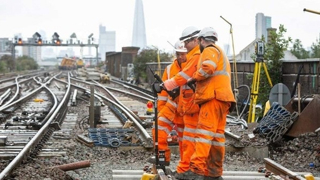
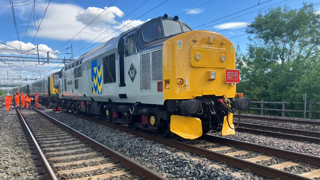

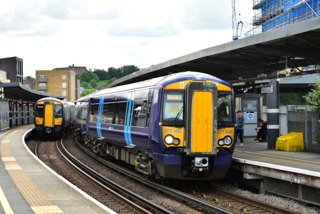
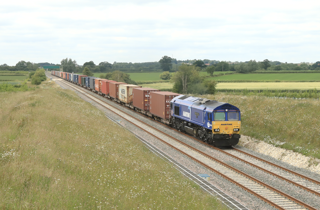







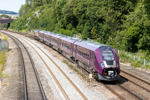


Login to comment
Comments
No comments have been made yet.